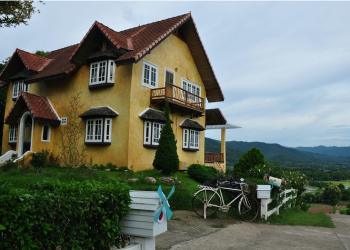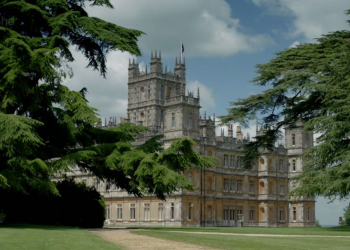Introduction to Landscaping Trends
Landscaping trends are constantly evolving, reflecting changes in design preferences, environmental consciousness, and lifestyle choices. As homeowners seek to create outdoor spaces that are both beautiful and functional, they turn to innovative landscaping ideas to transform their yards into modern retreats. In this article, we’ll explore some of the latest landscaping trends that are shaping the aesthetics of outdoor living.
Sustainable Landscaping Practices
One of the most significant trends in modern landscaping is a focus on sustainability and eco-friendliness. Homeowners are increasingly interested in reducing their environmental footprint by incorporating native plants, drought-resistant species, and environmentally friendly materials into their landscapes. By embracing sustainable landscaping practices, homeowners can create outdoor spaces that not only look beautiful but also support local ecosystems and conserve natural resources.
Outdoor Living Spaces
The concept of outdoor living has become increasingly popular in recent years, with homeowners looking to extend their living spaces beyond the confines of their homes. Outdoor living areas are designed to provide comfortable and functional spaces for relaxation, entertainment, and socializing. Features such as fire pits, outdoor kitchens, and comfortable seating areas allow homeowners to enjoy their outdoor spaces year-round, making the most of their backyard retreats.
Minimalist and Contemporary Designs
In contrast to the elaborate and ornate landscapes of the past, modern landscaping trends often embrace clean lines, simplicity, and minimalism. Contemporary designs focus on creating sleek and sophisticated outdoor spaces that are both visually striking and low-maintenance. Minimalist plantings, geometric shapes, and sleek hardscape materials are hallmarks of contemporary landscaping, reflecting a shift towards a more streamlined and understated aesthetic.
Vertical Gardening
With outdoor space becoming increasingly limited, many homeowners are turning to vertical gardening as a space-saving solution. Vertical gardens allow homeowners to maximize space by growing plants vertically, rather than horizontally. Living walls, trellises, and vertical planters can be used to create stunning vertical gardens that add visual interest and greenery to outdoor spaces, even in the smallest of yards.
Smart Landscaping Technology
Advancements in technology have revolutionized the way we design, install, and maintain outdoor spaces. Smart landscaping technology allows homeowners to automate irrigation systems, control outdoor lighting, and monitor environmental conditions with ease. From smart sprinkler systems to wireless outdoor speakers, technology has become an integral part of modern landscaping, enhancing both the aesthetic and functionality of outdoor spaces.
Edible Landscaping
As interest in sustainable living and organic gardening grows, more homeowners are incorporating edible plants into their landscapes. Edible landscaping combines beauty and functionality by incorporating fruit trees, vegetable gardens, and herb beds into outdoor spaces. Not only do edible landscapes provide fresh and nutritious produce, but they also add visual interest and diversity to the garden, creating a truly multi-functional outdoor space.
Naturalistic and Wild Gardens
In contrast to traditional manicured lawns and formal gardens, many homeowners are embracing a more naturalistic approach to landscaping. Wild gardens mimic the beauty and diversity of natural landscapes, incorporating native plants, grasses, and wildflowers to create habitats for wildlife and promote biodiversity. By allowing nature to take its course, homeowners can create landscapes that are not only beautiful but also sustainable and resilient to environmental changes.
Water Features and Aquascaping
Water features have long been a staple of landscape design, adding movement, sound, and visual interest to outdoor spaces. From serene ponds and tranquil waterfalls to elegant fountains and cascading streams, water features can transform an ordinary backyard into a peaceful oasis. Aquascaping, the art of designing underwater landscapes, is also gaining popularity, with homeowners creating stunning aquatic gardens filled with colorful fish, aquatic plants, and natural stone accents.
Xeriscaping and Drought-Tolerant Gardens
In regions prone to drought and water shortages, xeriscaping has emerged as a popular landscaping trend. Xeriscaping involves designing landscapes that require minimal irrigation and maintenance, making use of drought-tolerant plants, efficient irrigation systems, and water-saving techniques. By choosing plants that are well-adapted to local climate conditions and reducing water usage, homeowners can create beautiful and sustainable landscapes that thrive in arid environments.
Japanese and Zen Gardens
The influence of Japanese garden design can be seen in many modern landscapes, with homeowners drawn to the simplicity, serenity, and symbolism of traditional Japanese gardens. Zen gardens, in particular, emphasize tranquility and mindfulness, with features such as raked gravel, moss-covered rocks, and carefully pruned trees creating a sense of harmony and balance. By incorporating elements of Japanese garden design into their landscapes, homeowners can create peaceful and contemplative outdoor retreats.
Biophilic Design
Biophilic design seeks to reconnect people with nature by incorporating natural elements into the built environment. In landscaping, biophilic design principles emphasize the use of natural materials, native plants, and water features to create outdoor spaces that enhance well-being and promote environmental sustainability. By blurring the boundaries between indoor and outdoor spaces and fostering a deeper connection with the natural world, biophilic design can create outdoor environments that are both restorative and inspiring.
Artificial Turf and Low-Maintenance Lawns
As water conservation becomes increasingly important, many homeowners are turning to artificial turf as an alternative to traditional lawns. Artificial grass offers a low-maintenance and water-efficient landscaping solution that stays green and lush year-round, without the need for mowing, watering, or fertilizing. In addition to artificial turf, low-maintenance lawn alternatives such as clover, ornamental grasses, and ground covers are also gaining popularity, offering homeowners attractive and eco-friendly alternatives to traditional lawns.
Customized Lighting Solutions
Proper lighting can enhance the beauty and functionality of outdoor spaces, creating ambiance, highlighting architectural features, and improving safety and security. Customized lighting solutions, such as LED lights, uplighting, and accent lighting, allow homeowners to create dramatic effects and set the mood in their outdoor areas. From soft, subtle lighting for intimate gatherings to bright, task lighting for outdoor cooking and dining, customized lighting solutions can transform any outdoor space into a welcoming and inviting retreat.
Conclusion
In conclusion, landscaping trends are constantly evolving, reflecting changes in design preferences, environmental consciousness, and lifestyle choices. By staying informed about the latest trends and innovations in landscaping, homeowners can create outdoor spaces that are not only beautiful and functional but also sustainable and environmentally friendly. Whether you’re looking to create a sleek and contemporary outdoor oasis or a naturalistic and wild garden retreat, there are endless possibilities for transforming your outdoor space into a modern masterpiece.

FAQs (Frequently Asked Questions)
1. How do I choose the right landscaping trends for my outdoor space?
- When selecting landscaping trends for your outdoor space, consider factors such as your personal preferences, climate, available space, and maintenance requirements. Choose trends that complement your home’s architecture and reflect your lifestyle and design aesthetic.
2. Are sustainable landscaping practices difficult to implement?
- While sustainable landscaping practices may require some initial effort and investment, they can ultimately save you time, money, and resources in the long run. Start by incorporating small changes, such as planting native species, installing a rain barrel, or using permeable paving materials, and gradually expand your eco-friendly practices over time.
3. What are some budget-friendly landscaping trends?
- There are many budget-friendly landscaping trends that can help you enhance your outdoor space without breaking the bank. Consider DIY projects, such as building raised garden beds, installing a gravel patio, or creating a container garden. You can also save money by choosing low-maintenance plants, reusing materials, and shopping for deals on landscaping supplies.
4. How can I maintain my outdoor living space throughout the year?
- Regular maintenance is key to keeping your outdoor living space looking its best year-round. Create a maintenance schedule that includes tasks such as watering, pruning, weeding, fertilizing, and cleaning outdoor furniture and fixtures. Stay proactive about addressing any issues that arise, such as pest infestations, disease outbreaks, or drainage problems, to ensure your outdoor space remains healthy and vibrant.
5. Can I incorporate multiple landscaping trends into my outdoor space?
- Absolutely! One of the great things about landscaping is its versatility and adaptability. You can mix and match different landscaping trends to create a unique and personalized outdoor space that reflects your individual style and preferences. Experiment with different combinations of trends, textures, colors, and materials to create a landscape that is truly one-of-a-kind.
6. How can I make my outdoor space more environmentally friendly?
- There are many ways to make your outdoor space more environmentally friendly, from choosing native plants and organic fertilizers to conserving water and reducing energy consumption. Consider installing a rain garden to capture and filter stormwater runoff, using permeable paving materials to reduce runoff and erosion, and incorporating recycled materials into your landscape design.
7. Are there any landscaping trends that can increase the value of my home?
- Certain landscaping trends, such as outdoor living spaces, sustainable landscaping practices, and energy-efficient features, can enhance the value of your home and improve its curb appeal. According to real estate experts, a well-designed and well-maintained landscape can increase the resale value of a home by as much as 10-20%.
8. How can I stay updated on the latest landscaping trends and innovations?
- Stay informed about the latest landscaping trends and innovations by following industry publications, attending gardening workshops and seminars, visiting garden shows and expos, and networking with other gardening enthusiasts. You can also find inspiration and ideas online through social media, gardening blogs, and landscaping websites.













